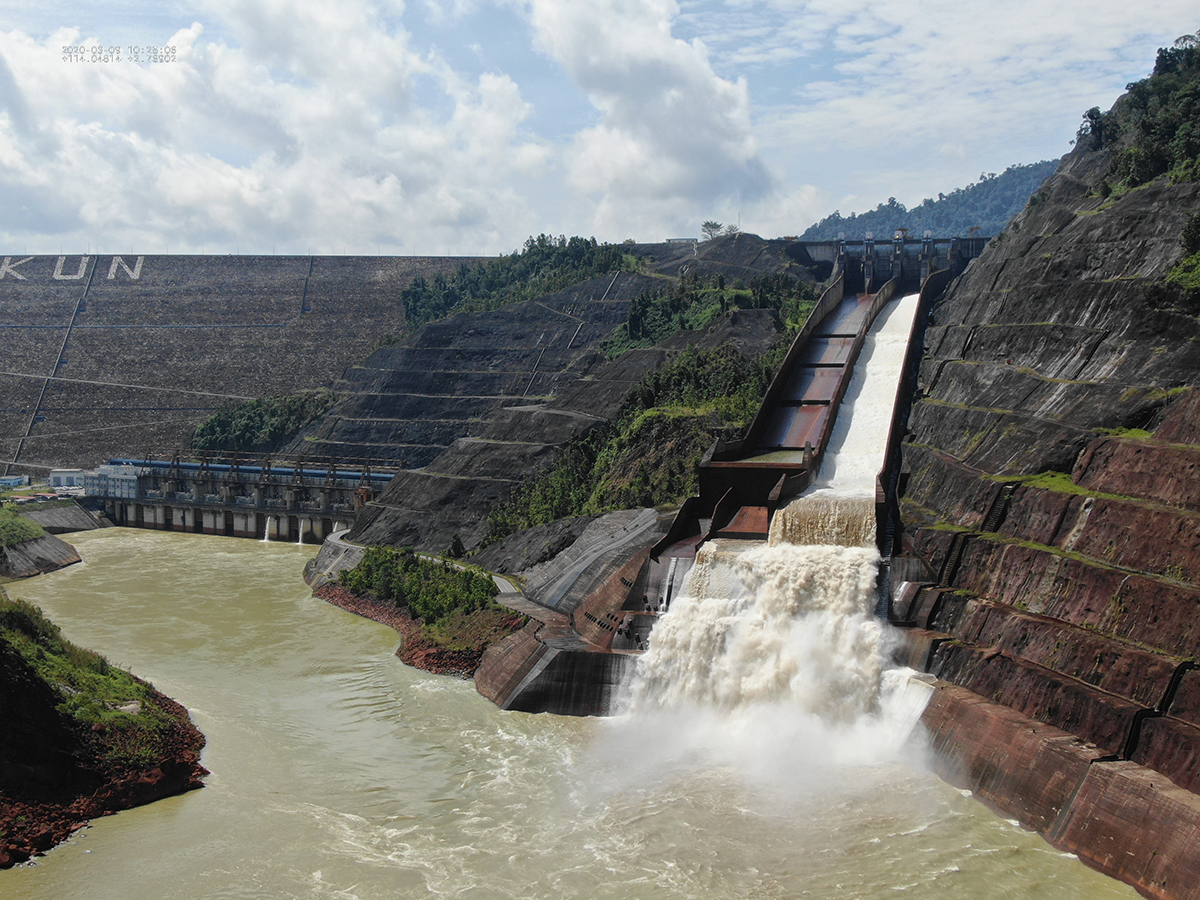

NEWS & UPDATES
Dynamic Water Dispatch Management System to Regulate Release of Water from Bakun HEP Reservoir
KUCHING
20 DECEMBER 2020
Sarawak Energy is implementing a water management system to better manage water resources at the reservoir of its hydropower plants. The system is currently being adopted at Sarawak Energy’s three hydroelectric plants (HEPs) of Batang Ai, Murum and Bakun to manage the interplay between weather, water flows and water release requirements.
The dynamic water dispatch management system integrates data on weather and inflow forecasts to optimise the operation of Sarawak Energy’s hydroelectric plants, especially in a cascading scheme such as Bakun and Murum HEPs. The Murum HEP is located upstream of the Bakun HEP and water released from Murum will arrive at the Bakun reservoir, generating energy for the second time through Bakun turbines.
With the adoption of the management system, water released from these plants can be modelled, incorporating predictive weather patterns and providing more accurate inflows and forecasted reservoir levels up to six months or more. This enables Sarawak Energy to operate and run its hydroelectric plants more efficiently.
With better prediction of inflows and reservoir water levels, a controlled release can be better planned during drier season, providing better water level management upstream and downstream. Once the system is fully operational, hydroelectric plants can mitigate the impact of heavy rainfall, reducing the severity of floods for areas downstream.
Sarawak Energy is commencing its seasonal controlled release from the Bakun reservoir from 23 December 2020, for five weeks, until the water level in the reservoir normalises. Over this period, the release volume is kept as low as possible, balancing both the upstream reservoir and downstream river levels to minimise the impact to the downstream regions.
The rise in river level and intensity of flowing water will reduce as the distance increases. Areas furthest downstream of the dam will experience a generally imperceptible rise in river level. For instance, the released water is estimated to flow past Kapit town about one day later and Sibu town after three days.
The main contributors to flood situations are natural factors such as heavy rainfall at downstream regions, high sea tides for coastal areas, and water flowing from tributaries of the Rejang river. Controlled release by itself does not cause a flood situation, due to the managed volumes.
Owned and operated by Sarawak Energy, Bakun HEP has a water storage capacity of 40 billion cubic meters. Studies conducted by third party consultants have shown that Bakun HEP holds back 30% of water flow from upstream tributaries of the Rejang river and regulates downstream flood rate by half, greatly reducing flooding situations in the downstream areas of Belaga, Kapit and Sibu.
When the Bakun reservoir level exceeds a certain point, water is released at regulated volumes through its spillway specially designed for this purpose. This controlled release is conducted on a seasonal basis after permission is secured from the Sarawak Rivers Board and the communities are notified at least two days ahead of the scheduled release.
This is a standard practice for hydropower operators worldwide and has been undertaken by the operator of Bakun since it was commissioned in 2010.


File photo: Small water release from the 2,400MW Bakun Hydroelectric Plant during spillway gate checking this year.